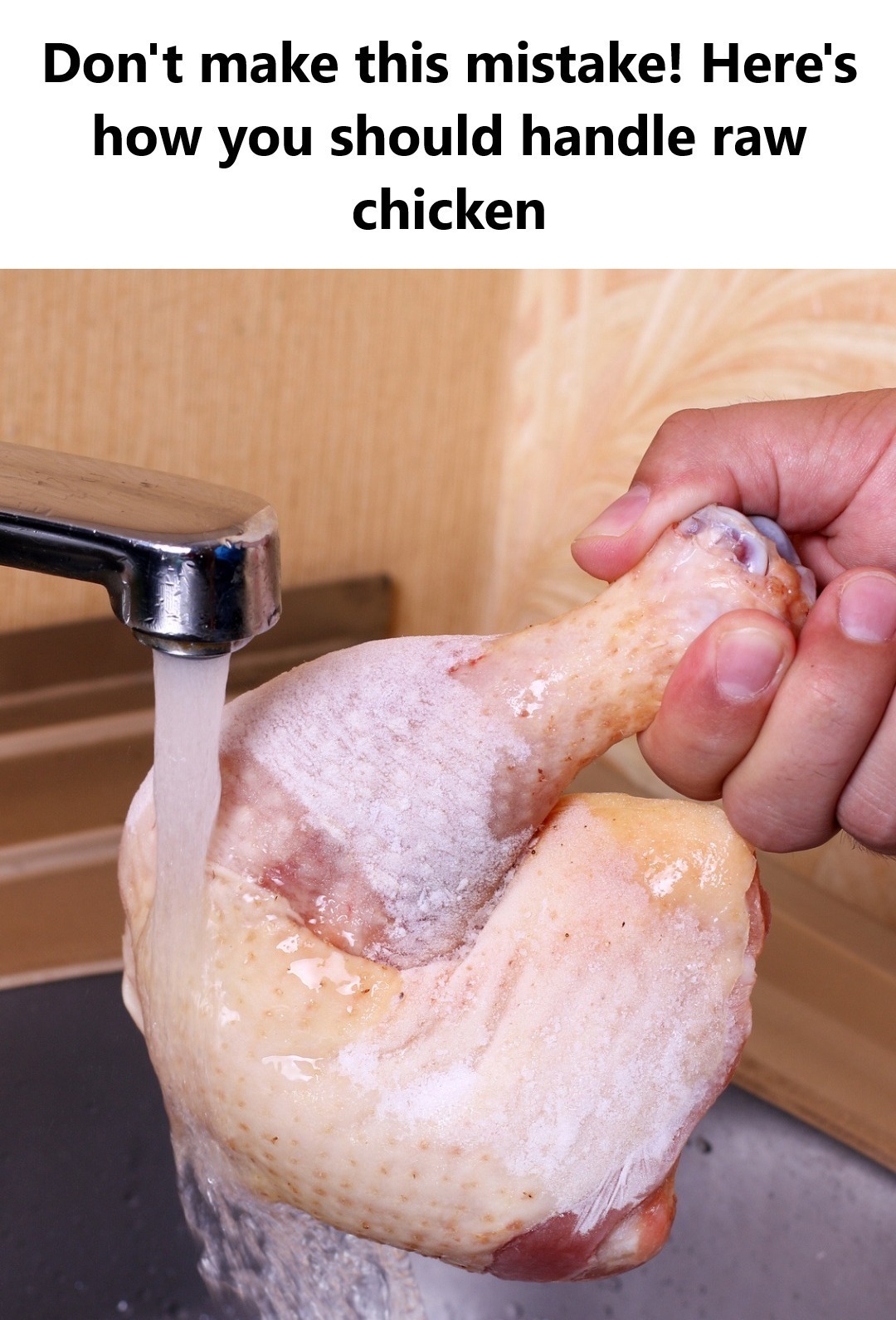ADVERTISEMENT
Salmonella is present on the surface of the chicken, but it doesn’t typically penetrate deep into the meat. This is why washing the chicken before cooking doesn’t reduce the risk of contamination, and in fact, it can make it worse. When you wash the chicken, the bacteria can be spread around your kitchen, increasing the chances of cross-contamination and exposure.
### 2.2 Campylobacter: Another Common Pathogen
Another dangerous pathogen often found on raw chicken is **Campylobacter**. It is one of the leading causes of bacterial foodborne illness worldwide. Campylobacter can cause **gastrointestinal illness**, which includes symptoms like stomach cramps, fever, and diarrhea. This bacteria is also usually found on the surface of the chicken, and just like Salmonella, washing it can spread the bacteria, increasing the chances of contamination in your kitchen.
Unlike Salmonella, Campylobacter is particularly dangerous for young children, older adults, and those with weakened immune systems. For this reason, it’s even more important to take extra care in handling raw chicken, ensuring that you avoid cross-contamination at all costs.
### 2.3 Clostridium Perfringens: A Silent Contaminant
**Clostridium perfringens** is another bacterium commonly found in raw poultry. It is a spore-forming bacterium that can survive even cooking temperatures if not handled properly. This bacterium can multiply rapidly when chicken is cooked and left out at room temperature, leading to food poisoning if consumed. It is not typically spread by washing raw chicken, but improper handling and cooking practices, such as leaving chicken out too long or not cooking it to the right temperature, can lead to outbreaks.
The main takeaway here is that even if you don’t wash your chicken, other handling and storage practices are just as critical in preventing foodborne illnesses. Therefore, it’s essential to follow a comprehensive food safety routine to minimize the risks associated with poultry.
—
## Chapter 3: The Myth of Washing Raw Chicken
### 3.1 Debunking Common Misconceptions
The idea that washing raw chicken is necessary stems from the belief that it will remove harmful bacteria. However, this is not the case. Washing raw chicken under water will not remove the bacteria from the meat’s surface. In fact, it is more likely to spread the bacteria throughout your kitchen. Let’s take a closer look at some common misconceptions:
#### Misconception #1: Washing Removes Bacteria
The truth is that **washing raw chicken does not remove bacteria**. The bacteria are often embedded in the chicken’s skin or feather follicles, and simply rinsing it under water doesn’t effectively get rid of them. Cooking chicken to the appropriate temperature is the only way to ensure that any harmful bacteria are killed.
#### Misconception #2: Rinsing Makes Chicken Safer
While rinsing the chicken may make it look cleaner, it does nothing to make the meat safer to eat. In fact, the bacteria that are on the surface of raw chicken can be spread to your kitchen surfaces, utensils, and even other foods when washed. Cooking chicken to an internal temperature of 165°F (74°C) is the only way to ensure it’s safe to eat.
#### Misconception #3: The Sink is Safe
Some people believe that washing raw chicken in the sink is an acceptable practice as long as the sink is cleaned afterward. However, even if you disinfect the sink afterward, the bacteria can still spread onto surrounding areas, including countertops, dish towels, and other utensils. The sink is a particularly high-risk area for contamination, as it is often used for various food preparation tasks.
—
## Chapter 4: Best Practices for Handling Raw Chicken
### 4.1 Cooking Chicken to the Right Temperature
The most effective way to kill harmful bacteria on chicken is by cooking it to the correct internal temperature. The **U.S. Department of Agriculture (USDA)** recommends cooking chicken to an internal temperature of 165°F (74°C), which is hot enough to destroy most bacteria, including Salmonella and Campylobacter. A meat thermometer is a crucial tool to ensure your chicken is cooked thoroughly.
### 4.2 Proper Storage and Thawing
When storing raw chicken, it’s important to keep it in the refrigerator at or below 40°F (4°C). If you need to thaw chicken, do so in the refrigerator, not on the countertop. Thawing chicken at room temperature can cause the meat to reach unsafe temperatures, allowing bacteria to multiply. If you need to thaw chicken quickly, you can also use the microwave or cold water method, but never leave chicken to thaw at room temperature for extended periods.
### 4.3 Avoiding Cross-Contamination
Cross-contamination is one of the most significant risks when handling raw chicken. Here are a few tips to avoid spreading harmful bacteria:
– **Use separate cutting boards**: Always use a separate cutting board for raw poultry and other foods, especially ready-to-eat items like vegetables and fruits.
– **Wash your hands thoroughly**: Always wash your hands with soap and water for at least 20 seconds before and after handling raw chicken.
– **Clean kitchen surfaces regularly**: Disinfect countertops, cutting boards, and utensils after preparing raw chicken to prevent bacteria from lingering.
– **Use separate utensils**: Always use different utensils for raw meat and ready-to-eat foods, including knives, forks, and tongs.
### 4.4 Cleaning and Sanitizing the Kitchen
After handling raw chicken, it’s important to thoroughly clean and sanitize your kitchen. Use hot, soapy water to clean surfaces, and make sure to use a food-safe disinfectant to kill any bacteria that might be left behind. You should also clean your kitchen sponge or dishcloth regularly to prevent bacteria from building up.
For Complete Cooking STEPS Please Head On Over To Next Page Or Open button (>) and don’t forget to SHARE with your Facebook friends
